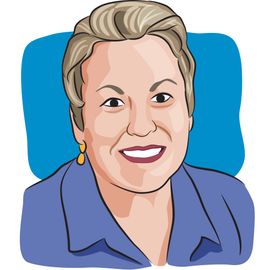- About Us
- Advertise / Support
- Editorial Board
- Contact Us
- CancerNetwork.com
- TargetedOnc.com
- OncLive.com
- OncNursingNews.com
- Terms & Conditions
- Privacy
- Do Not Sell My Information
- Washington My Health My Data
© 2025 MJH Life Sciences™ and CURE - Oncology & Cancer News for Patients & Caregivers. All rights reserved.
Fighting Cancer with Knowledge and Hope

Kathy LaTour is a breast cancer survivor, author of The Breast Cancer Companion and co-founder of CURE magazine. While cancer did not take her life, she has given it willingly to educate, empower and enlighten the newly diagnosed and those who care for them.
A book review of "Fighting Cancer with Knowledge and Hope" by Richard C. Frank, MD.
“No two cancers are exactly alike.”
Fighting Cancer with Knowledge and Hope
So begins by Richard C. Frank, MD, the director of cancer research at Whittingham Cancer Center, Norwalk Hospital in Whittingham, Connecticut. Frank explains that even two individuals with the same diagnosis will experience their disease differently as their cancer grows at different rates and affects their bodies in distinct ways. What’s the same, he explains, are the similarities in a human cell that allow it to become cancerous.
One of Frank’s strengths is his ability to explain complicated concepts in a way that is easy to visualize. Take, for example, this excerpt from his book on a cell and why it becomes cancerous:
“A cell is like a miniature factory in which every worker (protein) is responsible for carrying out a specific task for the good of the unit. Every protein has its role. When a protein’s structure is changed by gene mutations, then the function of the protein is also changed. Some mutations cause the protein’s capability to be enhanced, like a weight lifter on steroids, whereas others cause its role to be lost entirely."
Throughout the book, which covers not only the basics of how cancer grows and survives but also treatments and survival, Franks uses other great visual examples. He explains why a cancer that has metastasized from the original site is still the same cancer in this way: An Italian moves to America but he is still Italian. Consider this image when describing the cocktail of drugs that attack numerous pathways at the same time: instead of the “magic bullet,” it’s a “magic shotgun.”
He peppers the book with stories of his patients, providing us the facts of their diagnoses as well as a glimpse into their personalities. His tone in these settings is that of a human being facing another human being who is frightened, often in pain, and sometimes misinformed. Frank says to himself on one such occasion, when talking with a man who had been given six months to live, “Why am I here? Who could receive such a penetrating gaze from a fellow human?”
Throughout, Frank honors the “power of people” to overcome, endure, and move on through, with, and beyond cancer.
Related Content:



